According to Open House Chicago, Our Lady of Victory is in the Portage Park neighborhood of Chicago, though it isn’t that far south of the Copernicus Center in Jefferson Park. Other sources put the church in Jefferson Park.
Never mind, Our Lady of Victory was our first church of the day during Open House. Others would follow.
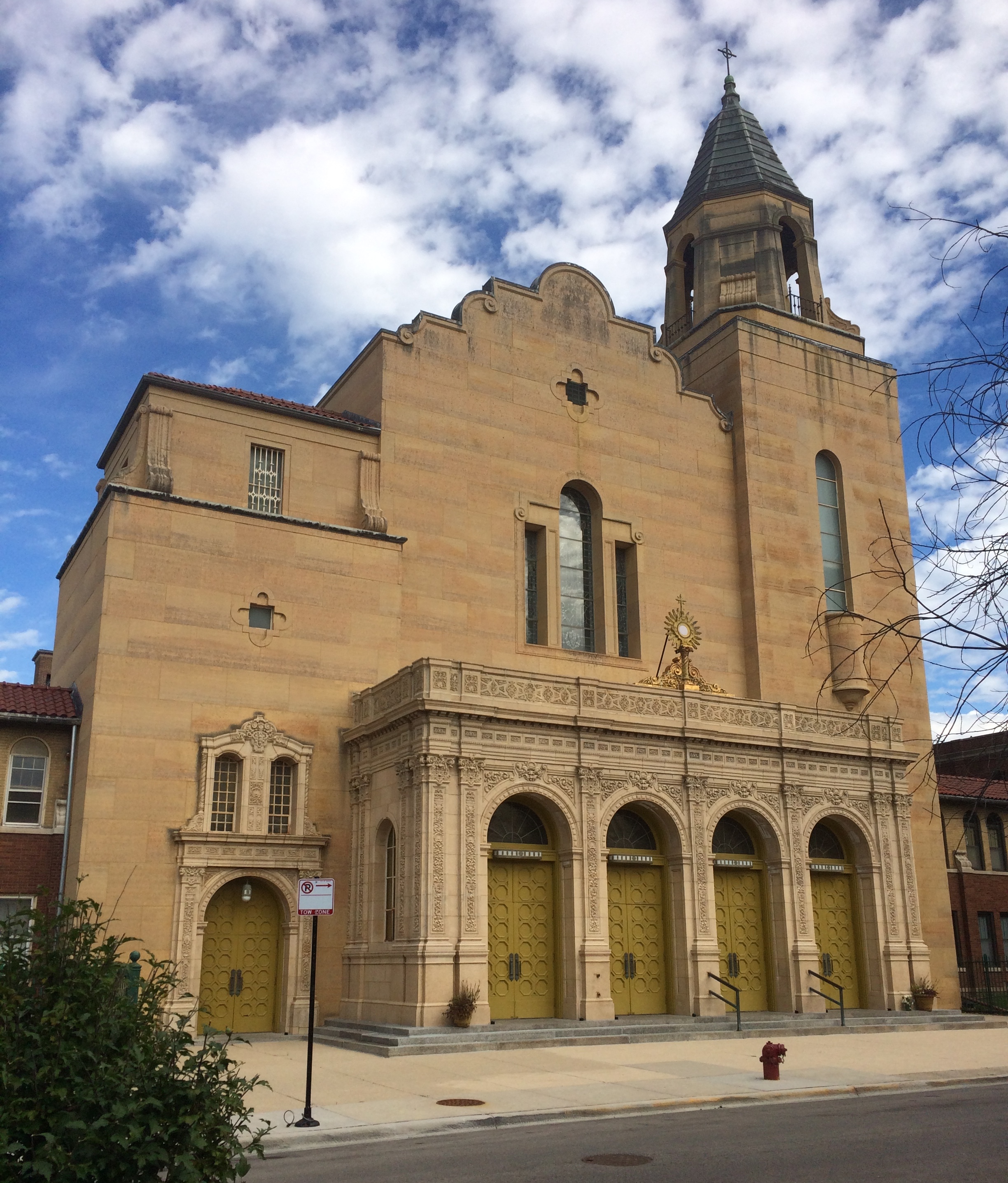 Underneath the main church is a chapel. According to a parishioner on hand to talk to visitors, the chapel was completed decades before the rest of the church — 1928, designed by E. Brielmaier & Sons. Then work stopped. First there were hard times, then there was a war.
Underneath the main church is a chapel. According to a parishioner on hand to talk to visitors, the chapel was completed decades before the rest of the church — 1928, designed by E. Brielmaier & Sons. Then work stopped. First there were hard times, then there was a war.
“Work on the upper church was delayed until it was finally completed in 1954,” Open House says. “The tan stone of the Spanish-style exterior was selected specifically to complement the color of the ornate terra-cotta around the original entrance.”
By this time, different architects were on the job: Meyer & Cook.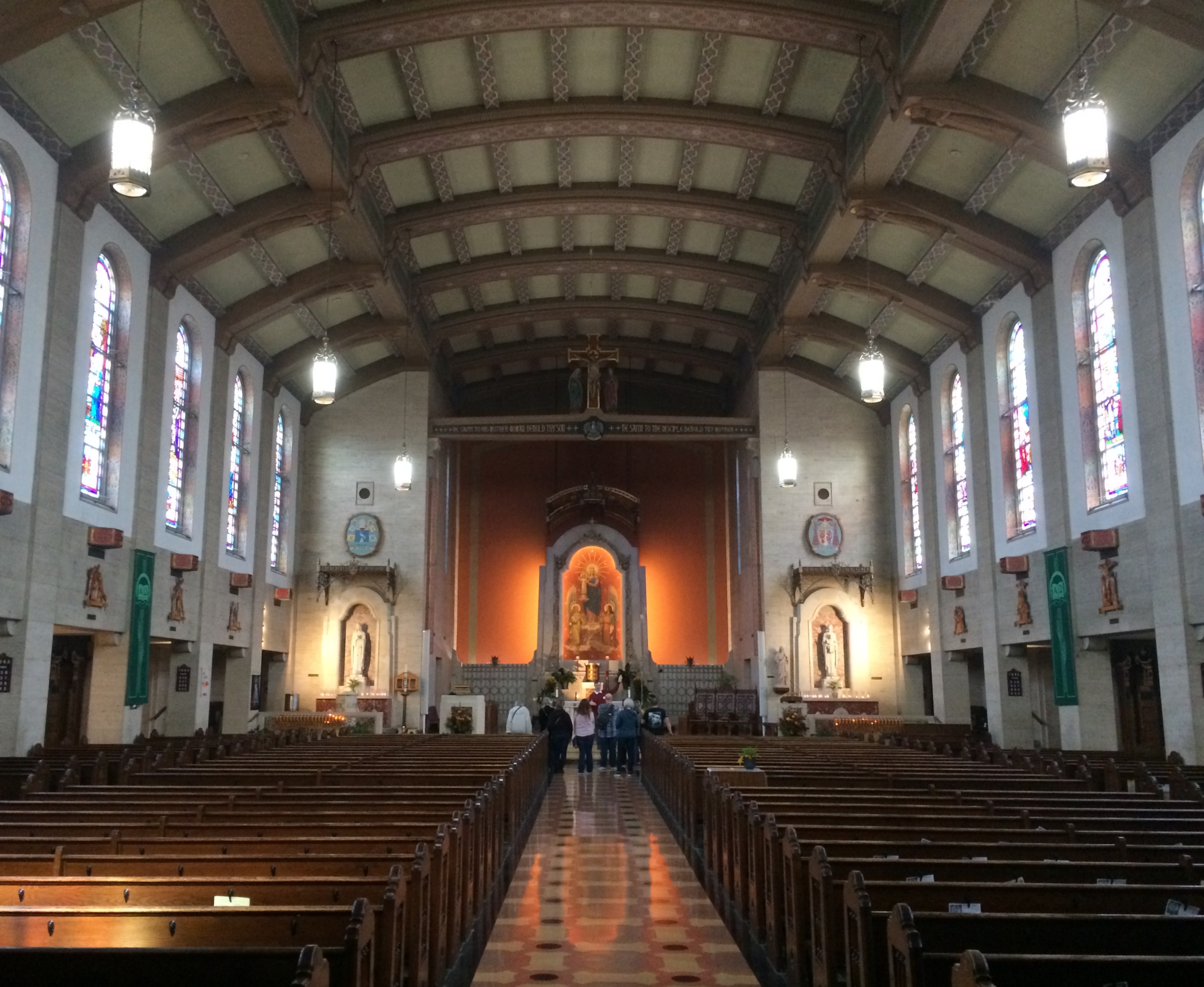
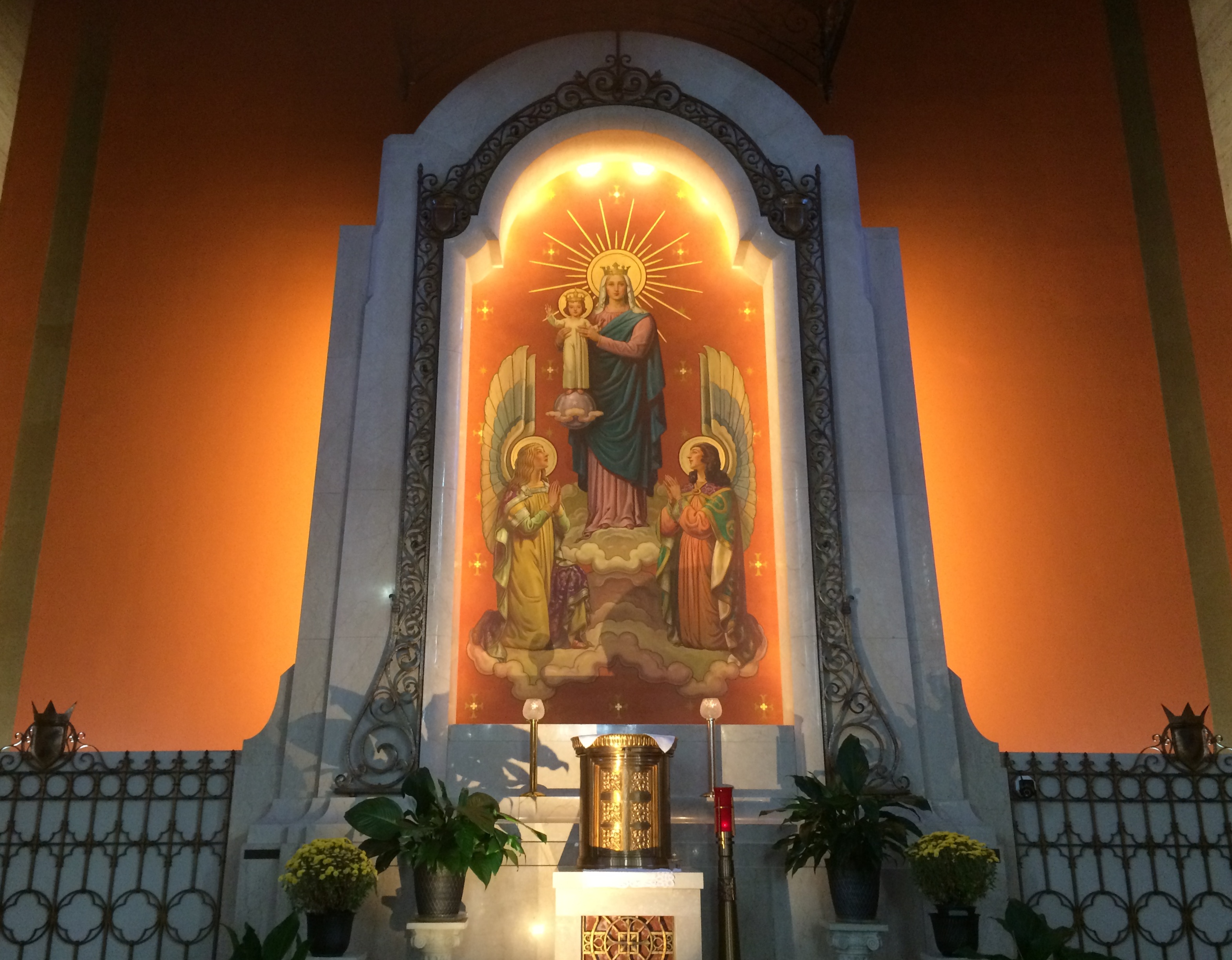 “The warmth of the exterior extends to the sanctuary’s lavish tan and pink marble and terrazzo. Polychromatic details throughout, particularly in the stained glass, wooden Stations of the Cross and other painted elements contribute to a colorful and welcoming space tied together with subtle Art Deco influences.”
“The warmth of the exterior extends to the sanctuary’s lavish tan and pink marble and terrazzo. Polychromatic details throughout, particularly in the stained glass, wooden Stations of the Cross and other painted elements contribute to a colorful and welcoming space tied together with subtle Art Deco influences.”
East of Our Lady of Victory, and east of the Kennedy Expressway in the Irving Park neighborhood, is St. Edward. I don’t know that I’ve ever visited a church named for Edward the Confessor, but there it was.
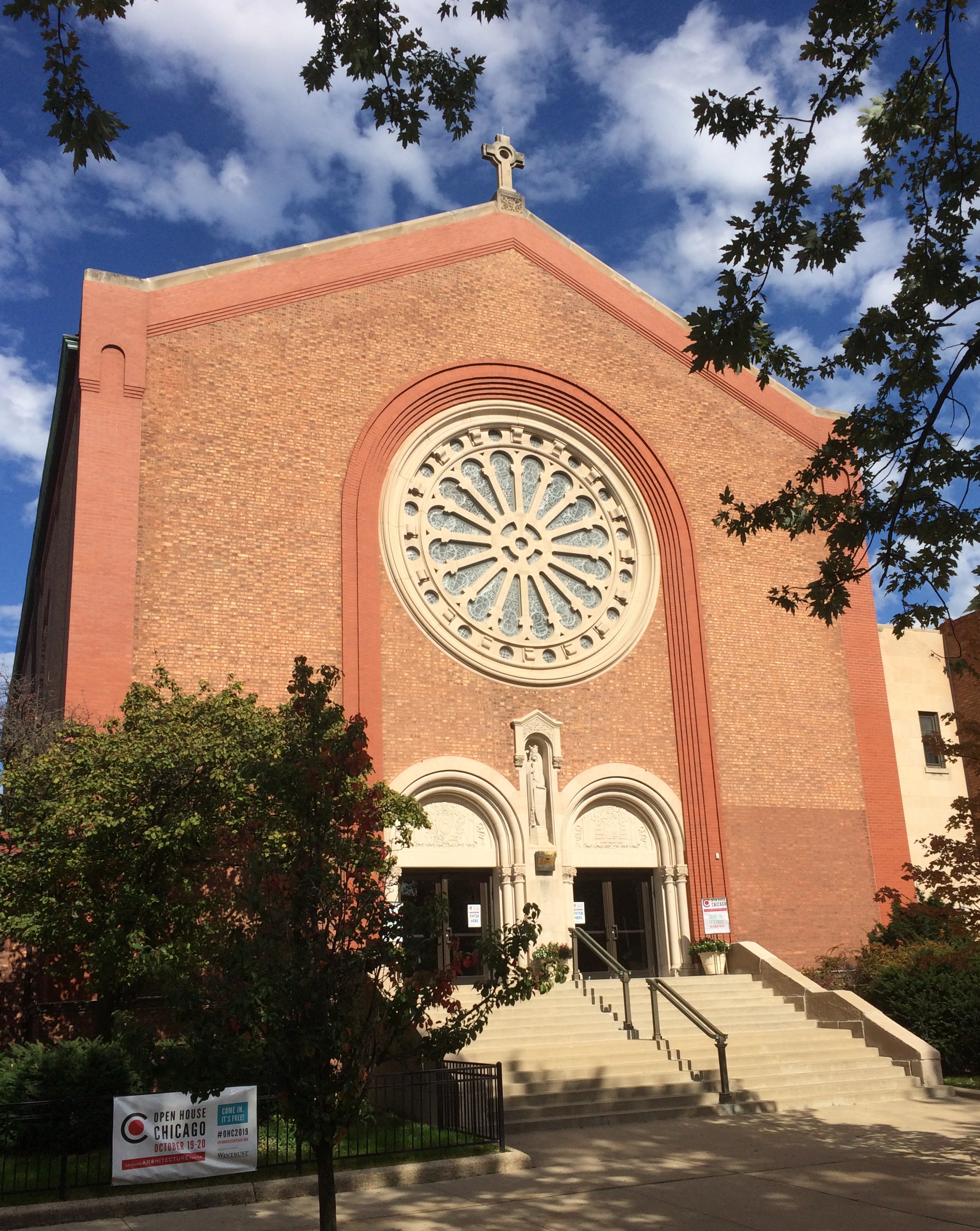 And there he is.
And there he is.
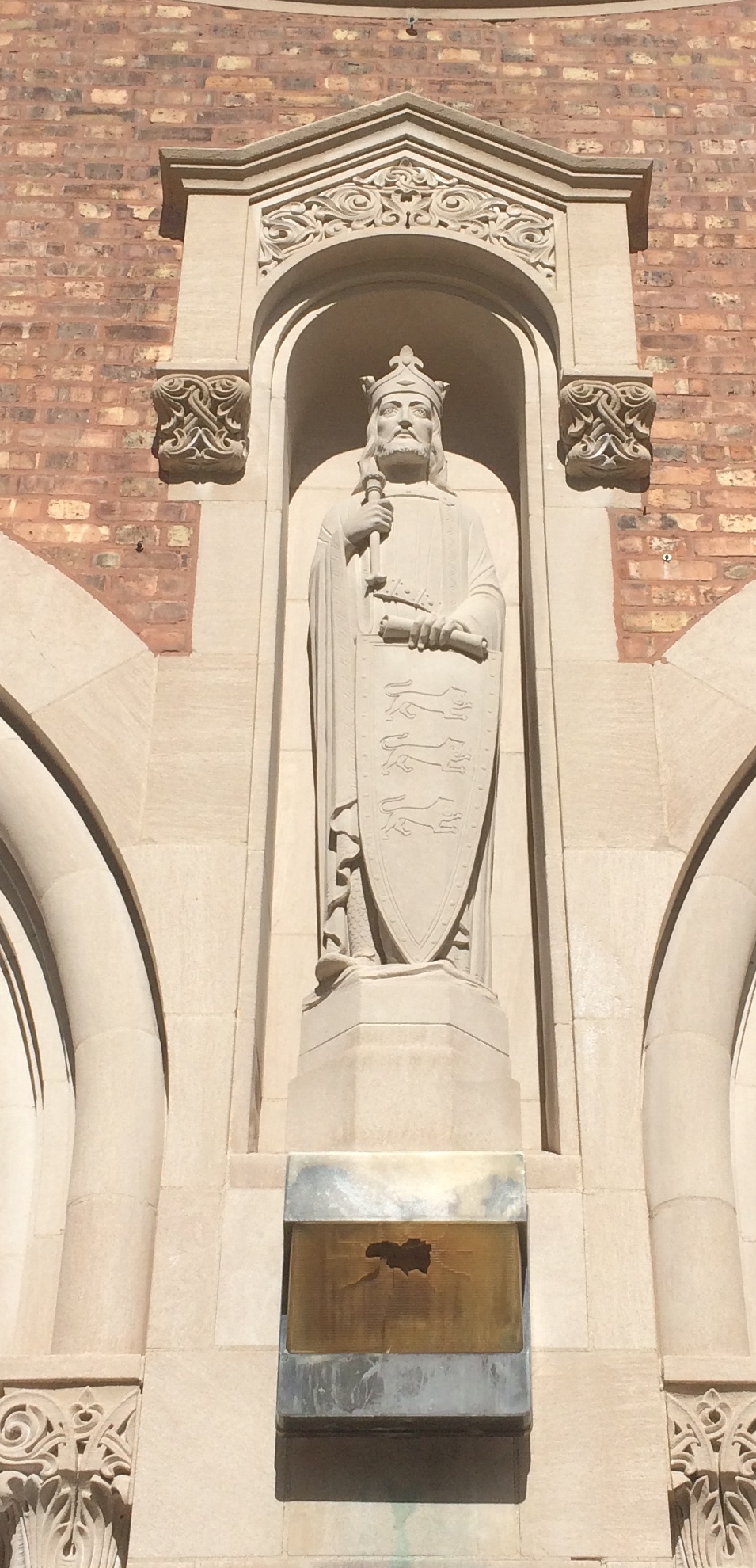 Quite a view, looking straight up.
Quite a view, looking straight up.
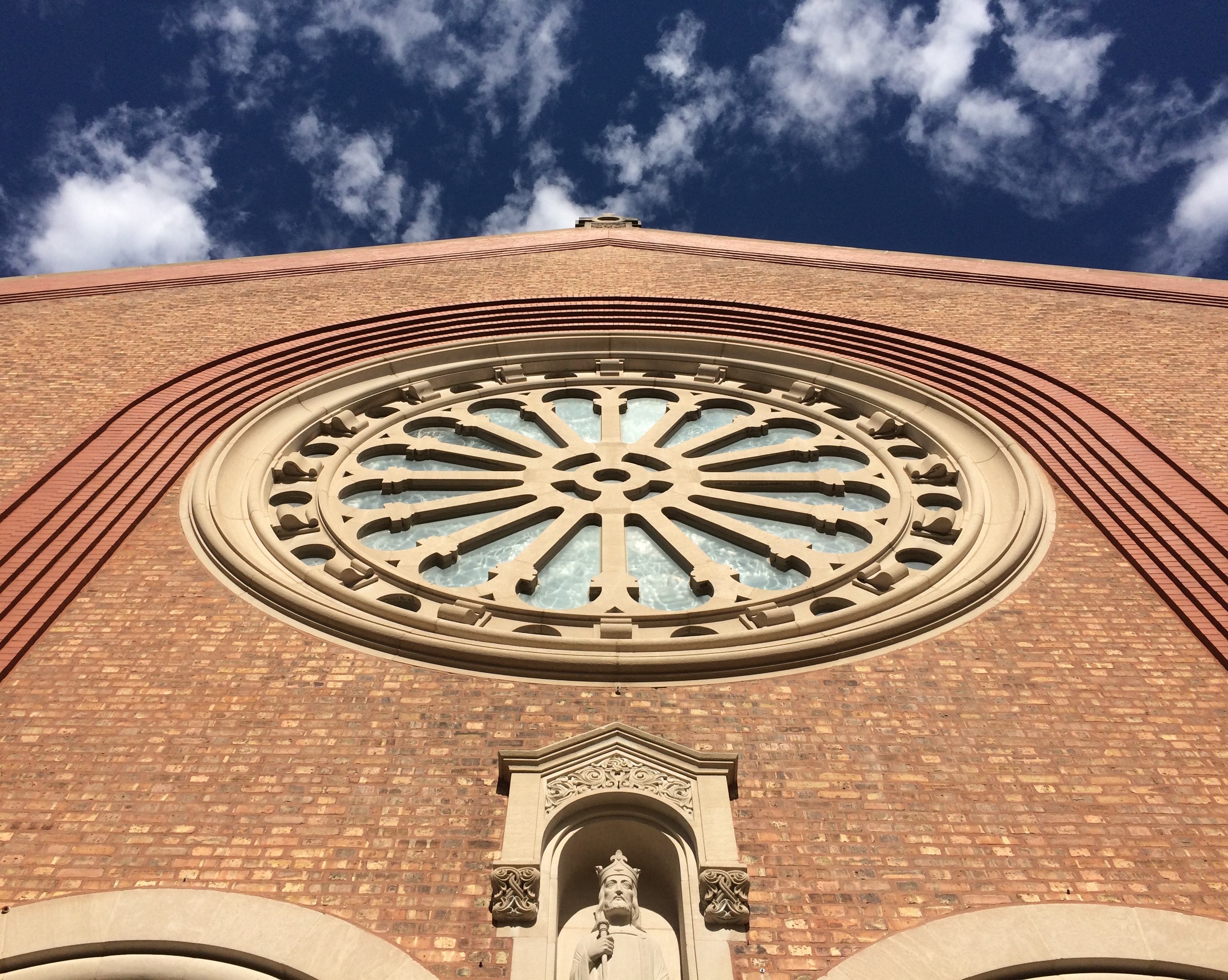 The church has a similar construction history as Our Lady of Victory, except the archdiocese managed to complete it before the war. “Plans to build the current St. Edward Church began around 1926,” Open House Chicago notes.
The church has a similar construction history as Our Lady of Victory, except the archdiocese managed to complete it before the war. “Plans to build the current St. Edward Church began around 1926,” Open House Chicago notes.
“Construction of the lower level was completed, but the work was halted because of the Depression. Worship took place in the lower church at basement level. The upper church was completed in 1940.”
 The distinctive feature of St. Edward is in the narthex. Not too many churches you can say that about.
The distinctive feature of St. Edward is in the narthex. Not too many churches you can say that about.
More specifically, all around the narthex ceiling is a painted replica of the first third of the Bayeux Tapestry, done in oils by an artist named Mae Connor-Anderson and completed in 2005. It’s about 75 feet long and you have to crane your neck to appreciate it, or — as I did for a few moments — lay on the floor.
Just inside the nave a parishioner, maybe only a shade older than I am, sat at a small table with some material about the church and especially the Tapestry, mostly some photocopied sheets. I took an interest and told him that I’d seen the Tapestry. He seemed a little excited at that — not only someone who knew what it was, but who had actually seen it. He told me that he wanted to see it himself, but hadn’t gotten around to it.
So we talked some more about the Tapestry and St. Edward’s replica, and just before I left, he told me to wait a second. From under the table, he produced a professionally made 12-page booklet about the St. Edward and the Tapestry and gave it to me. The cover:
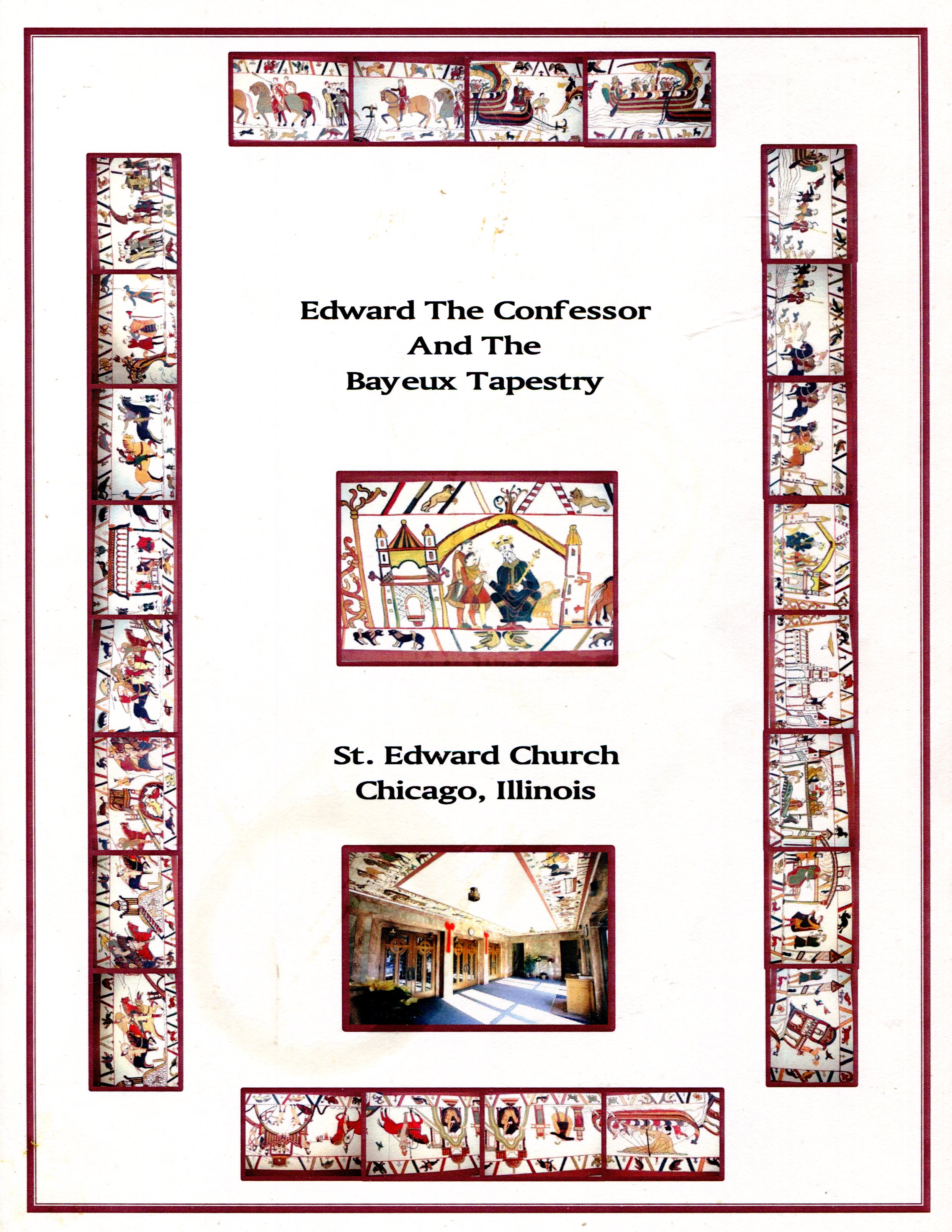 The first third was reproduced on the ceiling for reasons of space, but also because it begins with King Edward meeting Harold II — perfidious Harold, according to Norman propaganda — and ends with Edward being interred at Westminster Abbey. Other adjustments were made as well, including leaving the Latin tituli out.
The first third was reproduced on the ceiling for reasons of space, but also because it begins with King Edward meeting Harold II — perfidious Harold, according to Norman propaganda — and ends with Edward being interred at Westminster Abbey. Other adjustments were made as well, including leaving the Latin tituli out.
An example page of the booklet:
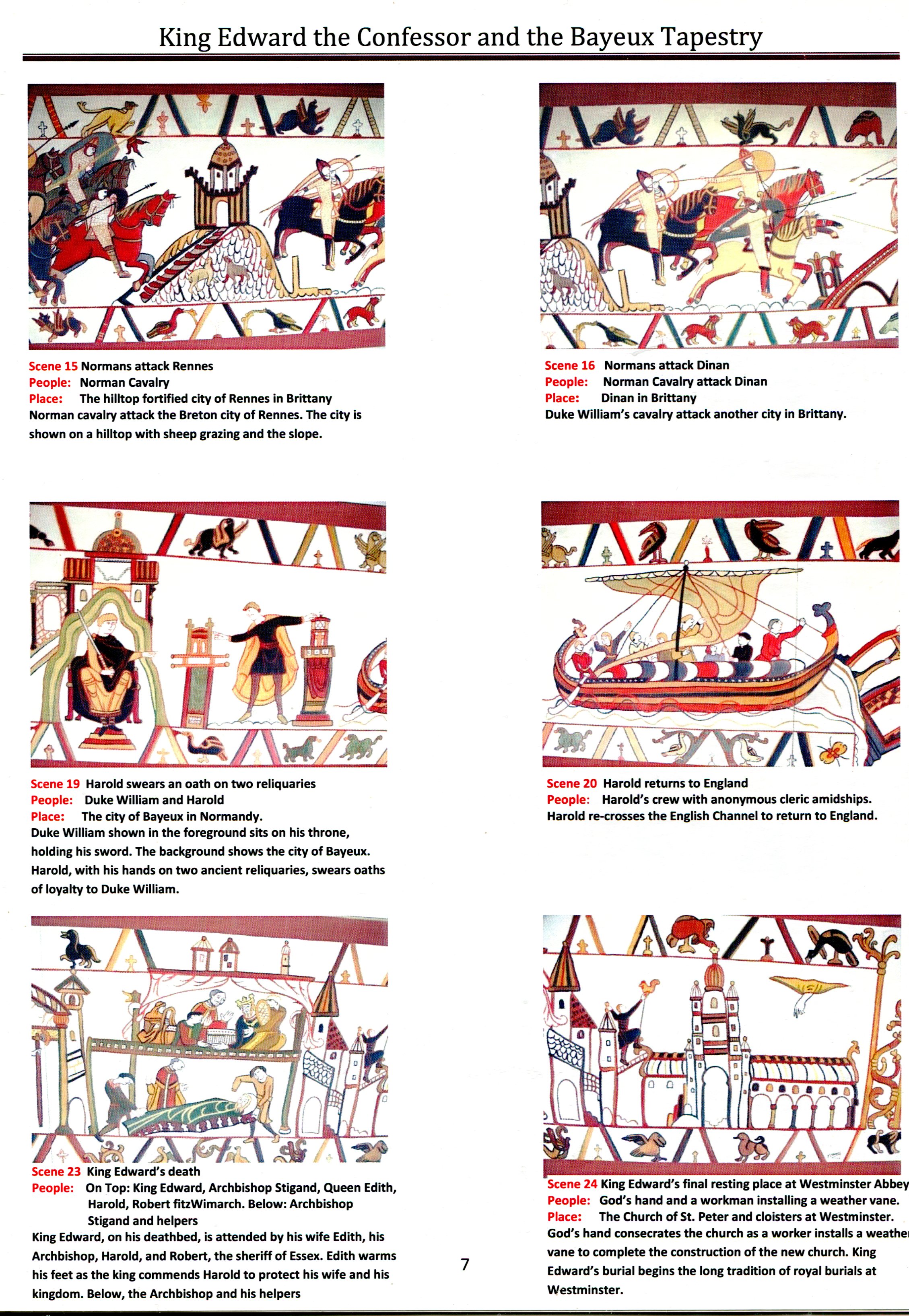 From my perch on the floor, I was determined to get at least one image of the ceiling painting.
From my perch on the floor, I was determined to get at least one image of the ceiling painting.
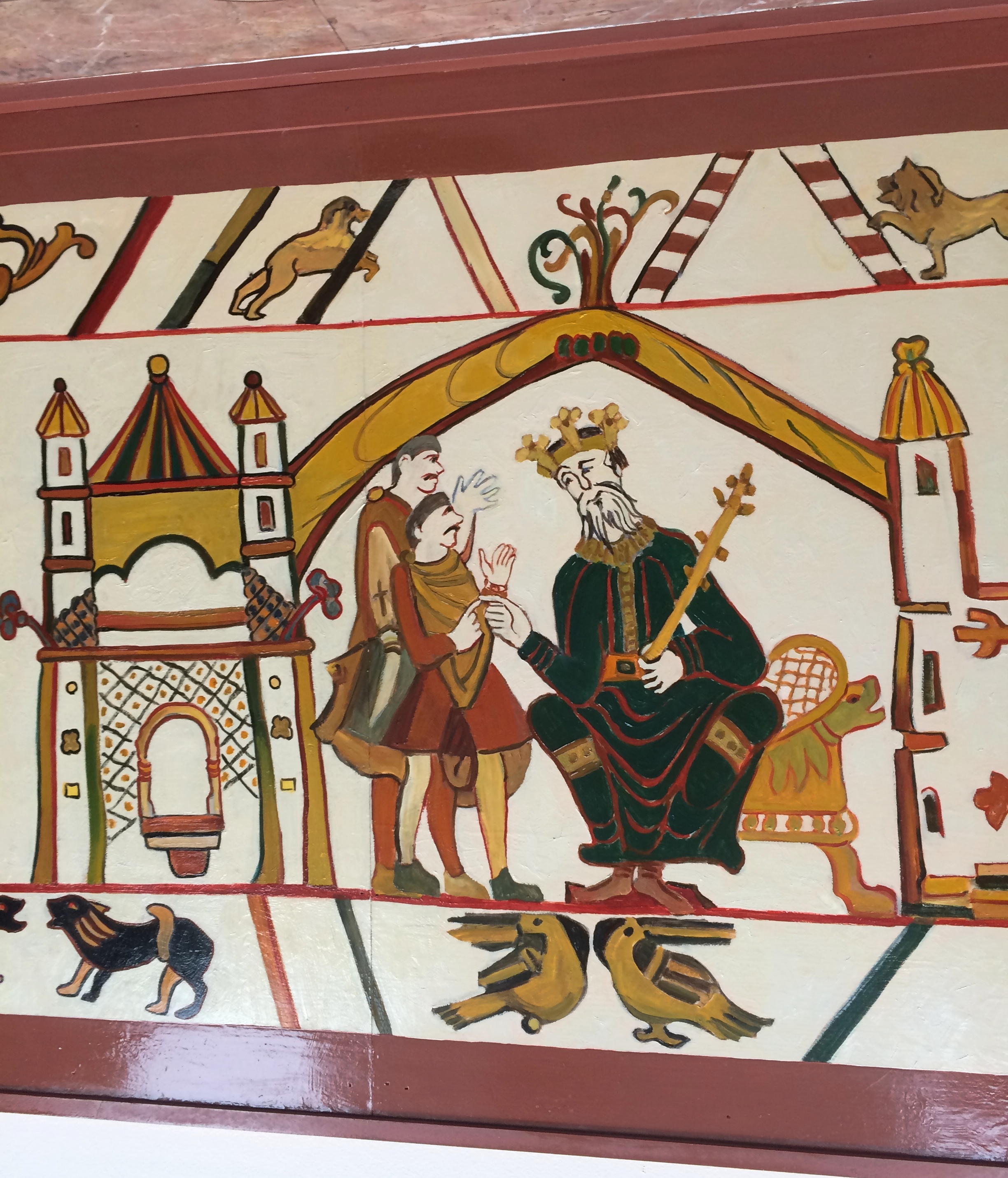 Who else but good King Edward?
Who else but good King Edward?
